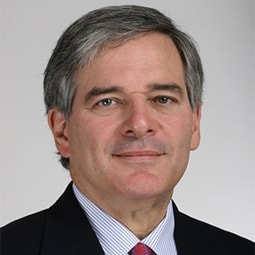Fifth Circuit Holds that Disallowance of Claim Pursuant to the Bankruptcy Code Does Not Render Such Claim Impaired and Casts Doubt on Creditors’ Ability to Recover Make-Whole Amounts or Post-Petition Interest at the Default Contract Rate
Executive Summary
On January 17, 2019, a three-judge panel of the United States Court of Appeals for the Fifth Circuit reversed, in part, and vacated, in part, a bankruptcy court decision in In re Ultra Petroleum Corp., Case No. 17-20793 (5th Cir. Jan. 17, 2019) (“Ultra II”). The bankruptcy court had held that certain creditors (the “OpCo Creditors”) of a solvent debtor were deemed unimpaired by the Ultra chapter 11 plan and, therefore, entitled to the full $201 million make-whole (the “Make-Whole Amount”) and post-petition interest at the default contract rate in the aggregate amount of $186 million. In re Ultra Petroleum Corp., 575 B.R. 361, 370–71 (Bankr. S.D. Tex. 2017) (“Ultra I”). The Fifth Circuit remanded the case back to the bankruptcy court to consider whether it was the Bankruptcy Code that impaired the creditors’ rights, and not the Ultra chapter 11 plan.
In particular, the Ultra II opinion:
- Holds that “[Bankruptcy] Code impairment is not the same thing as plan impairment” and, therefore, the bankruptcy court erred when holding that a plan impairs a creditor if the plan “refuses to pay an amount the Bankruptcy Code independently disallows.”
- Suggests that make-whole amounts will generally be considered unmatured interest in the Fifth Circuit. Thus, unless the solvent debtor exception applies, the Debtors can avoid paying the Make-Whole Amount without impairing the OpCo Creditors’ Claims.
- States that while OpCo Creditors have no legal right to collect post-petition interest at the default contract rate, the bankruptcy court may award interest (i) pursuant to the post-judgment interest statute (28 U.S.C. § 1961) at the applicable judgment rate or (ii) at a rate supported by the equities of the case.
The bankruptcy court will reconsider these issues in accordance with the Fifth Circuit’s opinion. Ultra II, however, may have substantial implications beyond this case. The opinion suggests that make-whole provisions may only be enforceable in extremely narrow circumstances. If that ultimately proves to be true, the holding could impact decisions made by future debtors regarding venue, decisions of market participants in connection with financings, as well as the drafting of make-whole provisions in future debt agreements.
Key Takeaways
- The Ultra II opinion does not include an explicit declaration that make-whole provisions are always unmatured interest, subject to disallowance under section 502(b); however, it comes very close. The opinion includes very little analysis of the bankruptcy court’s contrary determination, and related multi-page discussion, that the Make-Whole Amount is an enforceable liquidated damages obligation under New York state law. See Ultra I, at 368–72. In addition, the Ultra II court suggests that a make-whole provision may be both a liquidated damages clause and unmatured interest, subject to disallowance under section 502(b). See Ultra II, at 22 (“Others have concluded make-whole provisions are better viewed as liquidated damages, rather than unmatured interest. But those categories are not mutually exclusive.”) (citations omitted).
- To the extent the bankruptcy court adopts similar treatment, which appears likely in light of the Ultra II court’s strongly worded opinion, the ability of creditors to enforce a make-whole provision inside the Fifth Circuit could be limited to cases involving a solvent debtor and/or an oversecured creditor. Even with a solvent debtor, however, enforcement is far from guaranteed given the Ultra II court’s stated doubt that the solvent debtor exception applies under the Bankruptcy Code. Indeed, the Ultra II court explicitly stated that it expects the bankruptcy court to consider whether a creditor’s ability to seek dismissal of a bad-faith filing under the Bankruptcy Code impacts the continued application of the solvent debtor exception. Ultra II, p. 24 (“We trust the bankruptcy court on remand also will consider what effect (if any) § 1112(b) has on the solvent-debtor exception (if any exists).”).
- The inability to enforce make-whole provisions in most circumstances will likely result in various changes in behavior by future debtors, creditors and lenders. For example, potential debtors seeking to avoid make-whole obligations will be more likely to commence cases in the Fifth Circuit. On the other hand, creditors seeking to enforce make-wholes may insist on filing in a different circuit. Such dynamics will certainly affect the negotiation of pre-planned and pre-packaged plans.
- Additionally, lenders and borrowers may begin revising the currently accepted forms of make-whole provisions (e.g., including alternatives to yield maintenance formulas so the terms appear less like the economic equivalent of interest). Lenders may also seek terms that provide increased opportunities/abilities to trigger an event of default before a potential debtor seeks bankruptcy protection.
- The ability of creditors to recover post-petition interest at rates above the federal judgment rate could also be impacted; however, that appears less likely because the Ultra II decision leaves the door open for bankruptcy courts to award post-petition interest at the default contract rate based on the equities of the case.
Background
On April 29, 2016, predecessors of reorganized debtors Ultra Petroleum Corp, its operating subsidiary, Ultra Resources, Inc. (“OpCo”), and certain affiliated entities (collectively, the “Debtors”) commenced chapter 11 cases in the United States Bankruptcy Court for the Southern District of Texas. The Debtors were oil and gas exploration and production companies.
In connection with the Debtors’ operations, OpCo incurred direct obligations with respect to approximately $2.5 billion of unsecured debt (the “OpCo Funded Debt”), including outstanding principal obligations of (i) approximately $999 million under OpCo’s revolving credit agreement (the “Revolver”) and (ii) approximately $1.5 billion of private, unsecured notes (the “OpCo Notes”) issued by OpCo under a note purchase agreement (“NPA,” and together with the OpCo Notes and the Revolver, the “OpCo Debt Agreements”).
Commencement of the Debtors’ bankruptcy cases was an event of default under each of the OpCo Debt Agreements that resulted in all principal amounts outstanding, accrued prepetition interest, and certain other fees and costs, including the Make-Whole Amount owed on the OpCo Notes, becoming immediately due and payable. Thereafter, post-petition interest accrued on each of the foregoing amounts.
During the pendency of their chapter 11 cases, following a rise in commodity prices, the Debtors determined they were solvent and ultimately proposed a plan of reorganization that would pay the OpCo Funded Debt — comprised of the holders of OpCo Notes (the “OpCo Noteholders”) and the lenders party to the Revolver — in full, thereby rendering the OpCo Creditors unimpaired and without any right to vote to accept or reject the plan 1. However, because the plan failed to provide for the payment of the Make-Whole Amount or post-petition interest at the default contract rate, the OpCo Creditors objected to the proposed plan and their treatment as holders of unimpaired claims.
On March 13, 2017, the Debtors and an ad hoc committee of OpCo Creditors entered into a stipulation and agreed that arguments regarding the calculation of post-petition interest and allowance of the Make-Whole Amount would be determined after confirmation. The Debtors’ plan was confirmed the following day.
The Bankruptcy Court Decision</h2
The bankruptcy court heard arguments regarding the allowance of the Make-Whole Amount and the appropriate rate of post-petition interest in May 2017 and held that:
- The Make-Whole Amount is an enforceable liquidated damages provision under New York law, explaining that contractual provisions requiring payment of the Make-Whole Amount as well as post-petition default interest provided compensation for separate injuries and, therefore, did not result in an improper double recovery or render the Make-Whole Amount an unenforceable penalty, Ultra I, at 370–71;
- Non-payment of amounts required under the OpCo Debt Agreements — even if otherwise disallowed by the Bankruptcy Code — would render the affected claims impaired under section 1124(1) of the Bankruptcy Code;2 and
- When creditors are unimpaired, post-petition interest should be assessed at the default contract rate rather than the legal rate required by section 726(a)(5) of the Bankruptcy Code.3 Id. at 374–75.4
Accordingly, the bankruptcy court determined that the OpCo Noteholders were entitled to the Make-Whole Amount of approximately $201 million and the OpCo Creditors were entitled to aggregate post-petition interest of approximately $186 million.
The bankruptcy court rejected the Third Circuit’s holding in In re PPI Enterprises (U.S.) Inc5. that impairment of claims should only be considered with respect to claims “allowed” under the Bankruptcy Code because it failed to analyze the impairment question in the context of the plan discharge rather than Bankruptcy Code allowance. According to the bankruptcy court, the failure to pay the Make-Whole Amount would impair the OpCo Notes because the discharge of such claims is governed by section 1141(d),6 which provides that the extent of the discharge is governed by the terms of the confirmed plan of reorganization, and the Debtors’ plan discharged any liability related to the Make-Whole Amount and post-petition interest.
The Fifth Circuit Decision
The Fifth Circuit panel vacated and remanded the bankruptcy court’s decision, stating that: “The key legal question before us is whether the rich man’s creditors are ‘impaired’ by a plan that paid them everything allowed by the Bankruptcy Code,” which the bankruptcy court answered in the affirmative. Ultra II, at p.2. The Ultra II court disagreed, stating that it would “follow the monolithic mountain of authority holding the [Bankruptcy] Code — not the plan of reorganization — defines and limits the claim in these circumstances.” Id. Moreover, because the bankruptcy court determined that the OpCo Creditors, as unimpaired creditors, must be paid all amounts they were entitled to receive under the OpCo Debt Agreements, regardless of the disallowance provisions of the Bankruptcy Code, the bankruptcy court did not consider whether the Bankruptcy Code disallows or otherwise limits payment of (i) the Make-Whole Amount as unmatured interest or (ii) post-petition interest at the default contract rate. Accordingly, those questions were remanded to the bankruptcy court for reconsideration. Id.
In support of its holding that disallowance under the Bankruptcy Code does not result in impairment, the Ultra II court pointed to the language of section 1124(1), which provides that “‘a class of claims or interests’ is not impaired if ‘the plan . . . leaves unaltered the [claimant’s] legal, equitable, and contractual rights.’” Id. at 7. In contrast to the Ultra I decision, the Ultra II court embraced the Third Circuit’s holding in PPI Enterprises that disallowance of claims pursuant to one of the enumerated conditions of section 502(b) means it is the Bankruptcy Code rather than the plan that impairs such claims. Id. at 10 (citing PPI Enters., 324 F.3d at 204).
Next, the Ultra II court considered whether the OpCo Creditors’ claims for the Make-Whole Amount or post-petition interest at the contract default rate are disallowed under the Bankruptcy Code. The court began by examining pre-Bankruptcy Code law, which allowed a creditor of a solvent debtor or an oversecured creditor to recover unmatured interest that was part of such a creditor’s claim, but not post-petition interest on its claim. Section 506(b) of the Bankruptcy Code incorporates a similar exception for oversecured creditors to recover unmatured interest that is part of such creditors’ claims, which would otherwise be disallowed under section 502(b). However, according to the Ultra II court, the solvent debtor exception (codified in section 726(a)(5)) arguably is not an exception to section 502(b) because it provides for the payment of post-petition interest on a claim.7 Moreover, the section 726(a)(5) solvent debtor exception is applied to chapter 11 cases through section 1129(a)(7) and, therefore, only applies to impaired creditors in chapter 11.8
Although the opinion explicitly refrains from classifying the Make-Whole Amount as unmatured interest, multiple statements strongly suggest that the Ultra II court views make-whole payments generally as unmatured interest. The OpCo “[C]reditors can recover the Make-Whole Amount if (but only if) the solvent-debtor exception survives Congress’s enactment of § 502(b)(2).” Id. at 19; see also id. at 20 (“§ 502(b) . . . requires a bankruptcy court to disallow a claim ‘to the extent that [it seeks] unmatured interest’ . . . [and t]he debtors make a compelling argument the Make-Whole Amount is one such disallowed claim.”). “The only question then is whether the pre-Code solvent-debtor exception survives the enactment of § 502(b)(2).” Id. at 23. Moreover, the Ultra II court noted that the pre-Bankruptcy Code solvent debtor exception was often motivated by concerns over bad-faith filings, but that such concerns have largely been addressed by the procedures for seeking dismissal of a chapter 11 case under section 1112(b). Id.
Regarding the payment of post-petition interest, the Ultra II court stated “there is no legal right to post-petition interest at the default rates.” However, the court leaves open the possibility noting that there are two potential paths. First, the post-judgment interest statute9, which allows interest “on any money judgment in a civil case recovered in a district court.” Second, because bankruptcy courts are generally considered courts of equity, especially when it comes to awarding interest, equity may provide a basis to pay a higher rate.
Contributor(s)
















